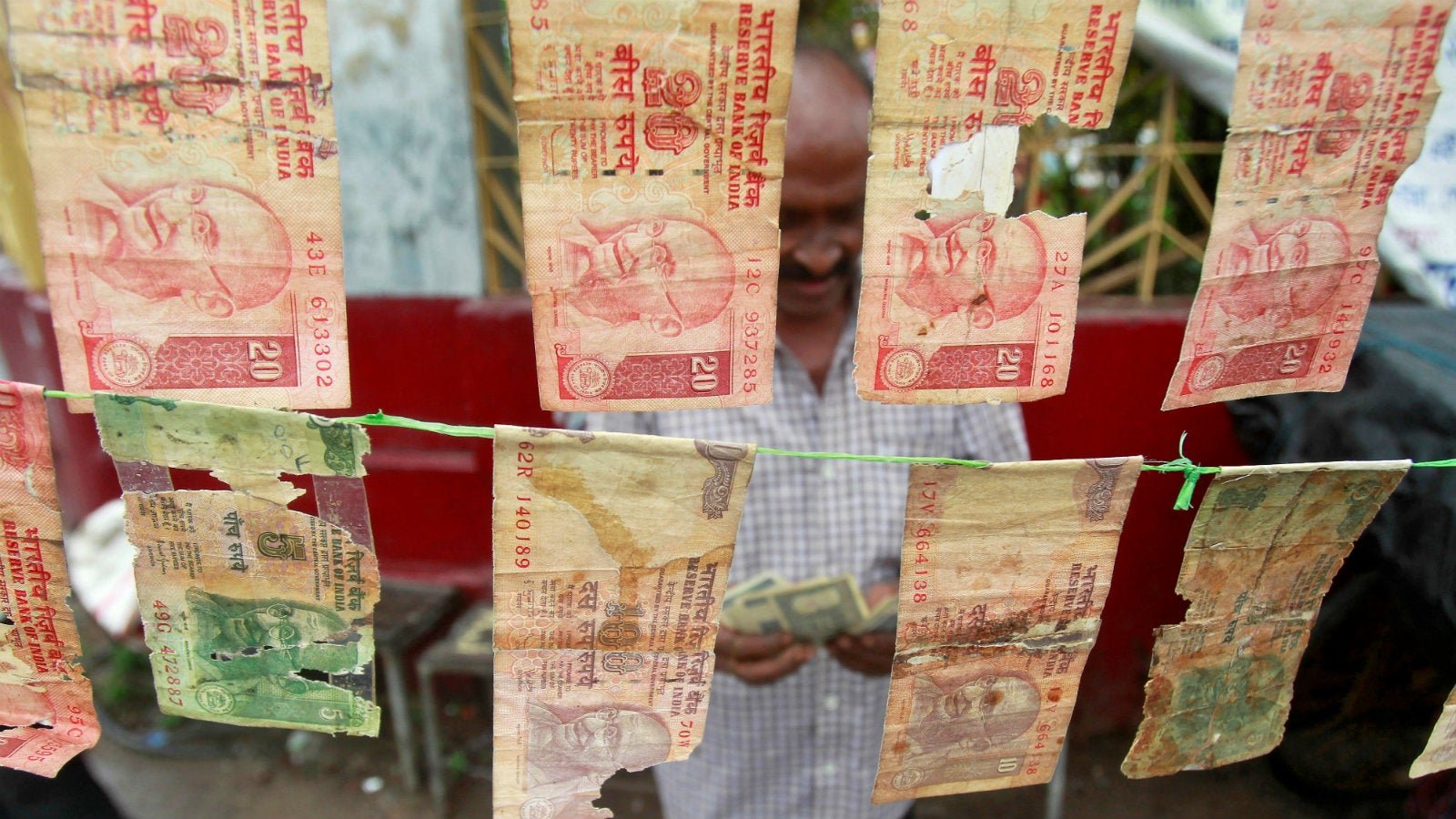Indian banks have a lot more bad loans than they initially thought
The toxic loans problem plaguing India’s banking sector doesn’t look like it’s going away soon.


The toxic loans problem plaguing India’s banking sector doesn’t look like it’s going away soon.
Non-performing assets (NPAs) at Indian banks jumped to 7.6% of their total assets in March 2016, up from 5.1% six months ago, according to the Reserve Bank of India’s (RBI) Financial Stability Report (FSR) released on June 28.
The reason: top borrowers are accounting for more and more bad loans.
In Sept. 2015, the top 100 borrowers accounted for 2.9% of the NPAs. Six months later, they accounted for 19.3% of the bad loans. This implies that lenders are now categorising more loans as NPAs. A loan is classified as non-performing when the borrower stops making interest or principal payments.
Asset quality review
The identification process for NPAs changed following RBI’s directive to banks on asset quality review (AQR) in Dec. 2015.
“The AQR has pretty much nudged and forced banks to start recognising restructured assets as NPAs. It has now forced companies and banks to start rethinking about how to resolve the problem,” said Saswata Guha, director of financial institutions at Fitch Ratings, a credit-rating agency. The bad-loan problem in Indian banks is probably peaking, Guha added, but the next two-three quarters could still see some damage.
Under AQR, the RBI asked banks to create adequate provisions to cover restructured loans.
“The RBI had pointed out last year that there was a problem with the classification of NPAs,” explained Madan Sabnavis, chief economist at Care Ratings. “If bank A was being serviced by a company but bank B wasn’t, then A treated it as performing and B as non-performing. This was changed so that all banks treat the loan as NPAs.”
Blame the banks
The latest numbers in the FSR may also be a warning about problems that are yet to surface.
“If we see credit growth which has slowed down, and the exposure of the top-100 borrowers has risen sharply, then these two things don’t fit in together. There is a disconnect,” said Ashvin Parekh, managing partner at Ashvin Parekh Advisory Services. “There is a lot of reading between the lines to do and the RBI is giving warning signals through the data.”
“No amount of initiatives from the regulator or the government is going to be enough to bring about the stability in banks. The larger issue is governance (by banks),” Parekh said.
Companies alone can’t be blamed for this mess. It also depends on how banks classify loans.
“Restructured assets were treated differently from NPAs when this concept came in, where it was justified that these assets are good but been buffeted by policy issues. Critics called this ever-greening but bankers justified the same, where these terms were extended and rate of interest lowered for them,” Care Ratings’ Sabnavis said.
“From 2015-16, RBI had mentioned that the new provisioning norms would come in for these assets. Therefore, intrinsically, the fault is not with companies but the recognition methods,” Sabnavis added.
Big fish
Lenders in Asia’s third-largest economy have often been criticised for not acting against large borrowers. Many banks don’t even properly perform the necessary checks before lending.
In a survey of 110 bankers (pdf) by audit and consultancy firm EY last year, 64% of the respondents said lapses in the borrower due diligence by banks was the main reason for stressed assets.
Besides, banks often don’t declare borrowers as “wilful defaulters”—i.e. those who do not repay loans despite being capable of it or those who use borrowed funds for purposes other than that for which they borrowed.
Here’s what a banker told EY:
It is more or less certain that if we declare a borrower a “wilful defaulter,” he will approach the court. Then it becomes our responsibility to justify our action with supporting evidence. It is not always possible to establish that the borrower has siphoned off the money or used it for a purpose other than the one for which the loan was taken. Hence, we need to be extremely cautious before we declare someone a “wilful defaulter.” Otherwise, we will not only lose the case, but we will also let the defaulter off the hook.
At the same time, economic conditions can also impact the repaying ability of firms, even if they are in good financial health.
“Often loan repayments happen on account of factors that could be judged to be transient—say, non-availability of inputs, non-payment by customers or even conditions in the sector or the economy. Banks have to use their judgement in these cases and not all judgements can be termed mala fide,” said T T Ram Mohan, a professor of finance and economics at IIM-Ahmedabad.
Nonetheless, this much is clear: The banking system needs a thorough cleaning up.
“We need to deal with legacy issues that hold back growth and bring changes to enhance the efficacy of our business processes and conduct,” RBI governor Raghuram Rajan said on June 28. “The stress in the banking sector, which mirrors the stress in the corporate sector, has to be dealt with in order to revive credit growth.”